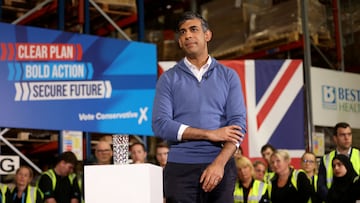POLITICS
Who are ‘Tories’, what is their ideology and why is the Conservative Party called that in the UK?
The Conservative Party in the United Kingdom has ruled in modern times more than any other, but what’s behind the name and its politics.

The United Kingdom is distinctive not just as a country but also in its political nomenclature. The two main parties in the House of Commons are the Conservative Party and the Labour Party. These two major parliamentary forces have alternated in power for much of the country’s recent history, although the Conservatives have dominated time at the helm.
Today, Thursday July 4, sees millions of UK citizens go to the ballot box to elect members to the House of Commons. Latest polls indicate that Labour is poised to secure a strong majority of votes, with the current government, led by Prime Minister Rishi Sunak, potentially facing a significant decline after 14 years in power and a slew of corruption, lies and questionable management of the country.
Where did the word ‘Tory’ come from?
The term “Tory” originates from the Irish word “toraidhe,” meaning bandit, cattle thief, or outlaw. This name was given by the liberals to the supporters of James II, Duke of York, the brother of Charles II, King of England in the 17th century.
With Tory support, James II ascended to the English throne, despite being a Roman Catholic in a country with its own church, the Anglican. The opposing party, the Whigs, did not want his reign. Once king, James II gradually lost Tory support due to his pro-Catholic policies. This culminated in the Glorious Revolution of 1689, when Parliament declared that the king had abdicated and appointed his daughter Mary II and her husband, William of Orange, as monarchs.
Although the pejorative connotation of the name diminished over time, Robert Peel, the party leader, adopted the term “Conservative” in a reform in 1834, which reestablished the political formation. Since then, the terms have been used interchangeably. In 1912, the party underwent another transformation when it merged with the Liberal Unionist Party to form the Conservative and Unionist Party that exists today.
A brief look at the ideology of the Tories
Sunak’s platform has centred on reducing taxes and addressing immigration in the UK. In reality, citizens have generally experienced higher tax and there has been a sizeable increase in immigration to the island. His ideology is based on the pillars of one-nation conservatism, economic liberalism, and a certain degree of Euroscepticism, with Brexit – the name given to the UK leaving the European Union – generally being seen as a predictable economic disaster.
The Conservatives are positioned at the centre or centre-right of the political spectrum, supporting traditional family values and national security in foreign policy, exemplified by their support for the invasion of Afghanistan. Other key principles include defending citizens’ liberties and protecting private industry. Famous leaders of the past include Winston Churchill and Margaret Thatcher.





